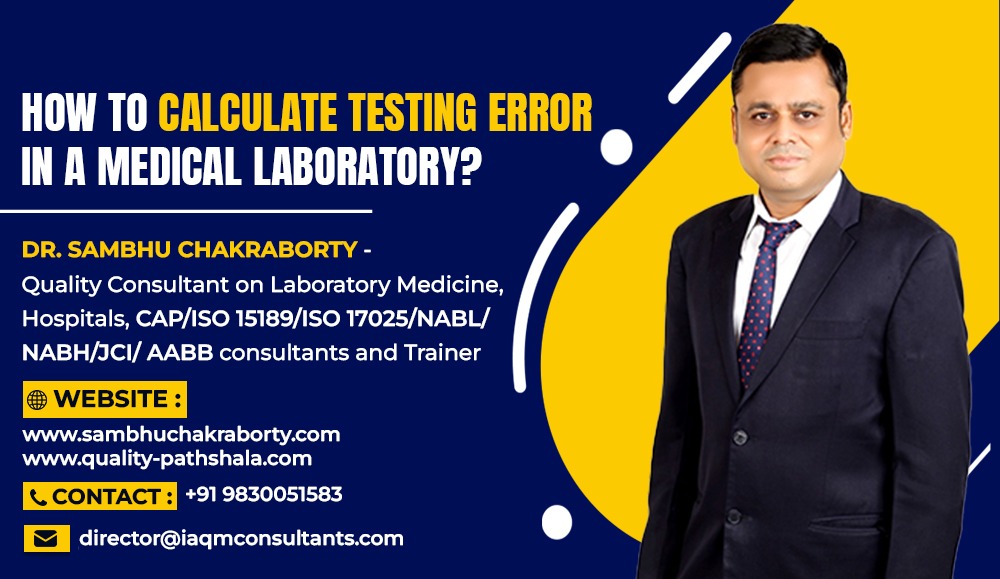Let’s consider an example of calculating testing error for a blood glucose test in a medical laboratory:
- Obtain True Value or Reference Value: Assume that a certified reference material (CRM) for blood glucose is available with a true value of 100 mg/dL.
- Perform the Test: Run the blood glucose test on patient samples using the laboratory’s test method.
- Calculate Absolute Error: Suppose the laboratory obtains the following test results from three patient samples: 95 mg/dL, 102 mg/dL, and 98 mg/dL.
- Absolute Error for Sample 1 = | 95 mg/dL – 100 mg/dL | = 5 mg/dL Absolute Error for Sample 2 = | 102 mg/dL – 100 mg/dL | = 2 mg/dL Absolute Error for Sample 3 = | 98 mg/dL – 100 mg/dL | = 2 mg/dL
- Calculate Percentage Error: Percentage Error for Sample 1 = (| 95 mg/dL – 100 mg/dL | / 100 mg/dL) * 100 = (5 mg/dL / 100 mg/dL) * 100 = 5% Percentage Error for Sample 2 = (| 102 mg/dL – 100 mg/dL | / 100 mg/dL) * 100 = (2 mg/dL / 100 mg/dL) * 100 = 2% Percentage Error for Sample 3 = (| 98 mg/dL – 100 mg/dL | / 100 mg/dL) * 100 = (2 mg/dL / 100 mg/dL) * 100 = 2%
- Calculate Mean Error: Mean Error = (5% + 2% + 2%) / 3 = 3%
- Analyze Precision: Suppose the standard deviation of the test results for the three samples is 2.5 mg/dL.
- Coefficient of Variation (CV) = (Standard Deviation / Mean) * 100 = (2.5 mg/dL / 98.33 mg/dL) * 100 ≈ 2.54%
Report and Interpretation: In this example, the testing error for the blood glucose test is calculated to be 3%, indicating that, on average, the test results deviate from the true value by 3%. The precision, represented by the coefficient of variation (CV), is approximately 2.54%, indicating the repeatability of the test results.
Interpretation: The test method shows acceptable accuracy and precision for the blood glucose test, with errors within acceptable limits for clinical use.
Remember that this is a simplified example, and in practice, multiple samples and repeated tests are used to calculate errors and assess precision accurately. Additionally, the acceptable error limits may vary depending on the clinical significance of the analyte being measured.
About the author
Dr. Sambhu Chakraborty is a distinguished consultant in quality accreditation for laboratories and hospitals. With a leadership portfolio that includes directorial roles in two laboratory organizations and a consulting firm, as well as chairmanship in a prominent laboratory organization, Dr. Chakraborty is a respected voice in the field. For further engagement or inquiries, Dr. Chakraborty can be contacted through email at director@iaqmconsultants.com and info@sambhuchakraborty.com. Additional resourcesand contact information are available on his websites, https://www.quality-pathshala.com and https://www.sambhuchakraborty.com, or via WhatsApp at +919830051583
